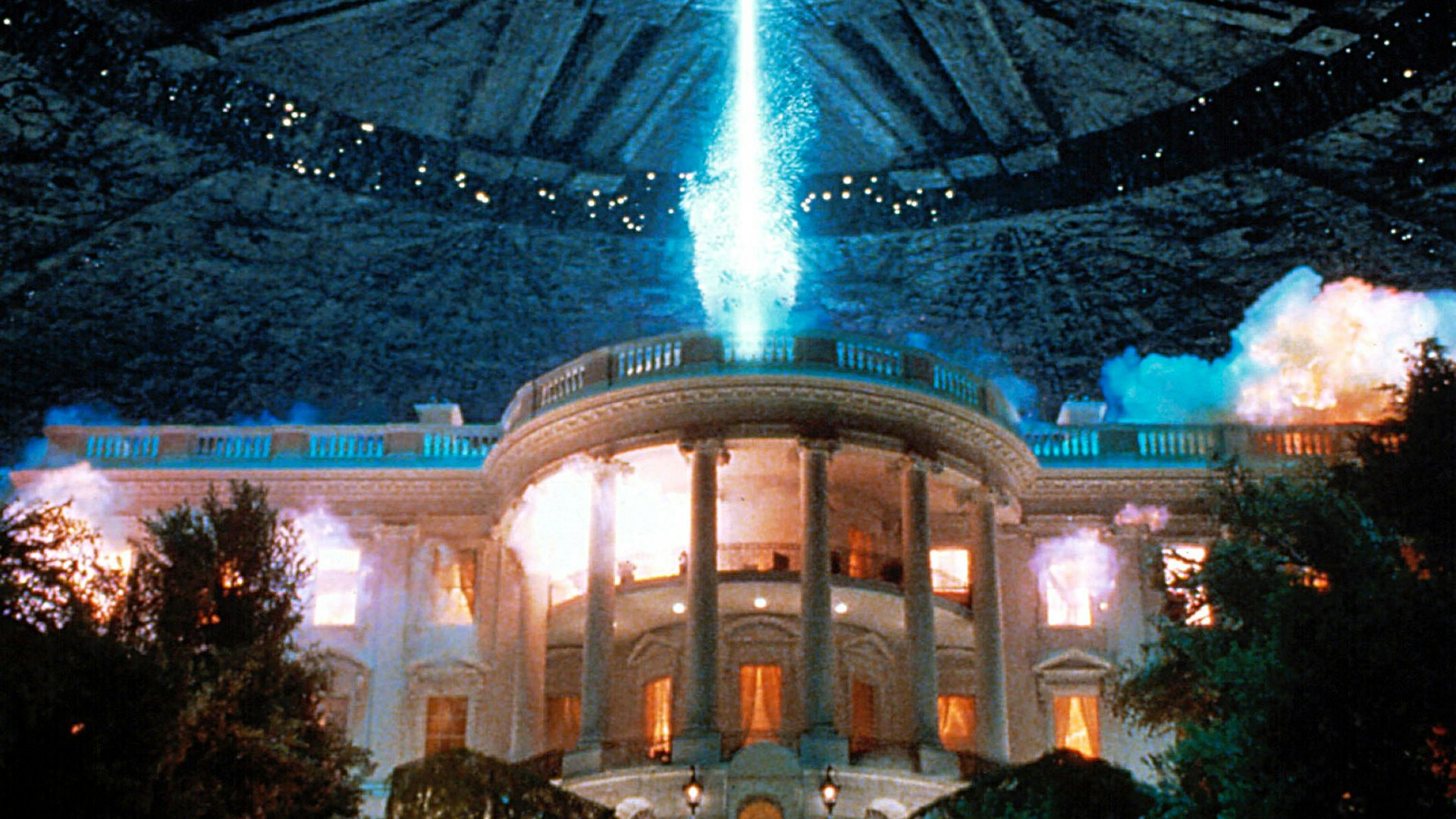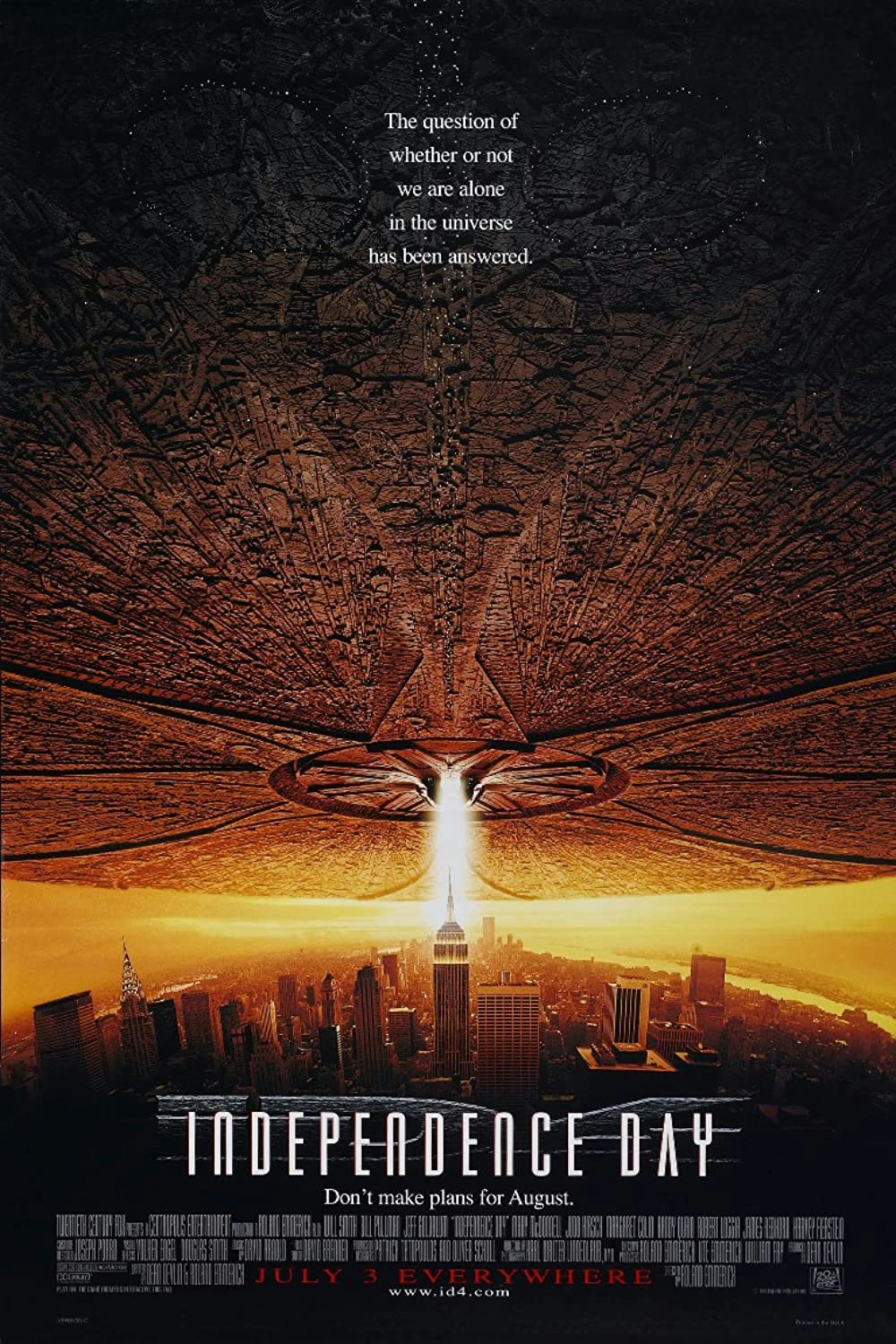
America’s most patriotic movie is a strange mishmash of explosive action and sci-fi exploration, revealing both our fascination with and repulsion of aliens.
Released in 1996, Independence Day imagines what would happen if aliens attacked the planet, leaving only a ragtag group of soldiers and scientists to save the day.
The film was not the first alien invasion movie, nor was it the last, but its massive blockbuster success provides an opportunity to examine our real-life relationship with aliens — especially now that it’s streaming on HBO Max.
But is Independence Day accurate, like, at all? According to Seth Shostak, senior astronomer at the SETI Institute, the movie gets some concepts right, but at least one major thing wrong.
“I don't know what would motivate them to come here — just to flatten the White House,” Shostak tells Inverse.
Reel Science is an Inverse series that reveals the real (and fake) science behind your favorite movies and TV.
How do we detect alien signals?

In Independence Day’s opening scenes, a researcher at SETI (an organization that searches for extraterrestrial intelligence) is lazily playing golf at the office when he receives a mysterious radio signal. The researcher phones his boss and they determine that the signal has come from “another world." In other words: aliens.
As a real-life researcher at the SETI Institute, Shostak has some thoughts on the movie’s portrayal of their work — specifically the bored researcher playing golf while waiting for a signal.
“Nobody here practices their golf!” Shostak says.
The broad strokes of the movie’s SETI mission are “generally” correct according to Shostak.
“We are looking for the aliens — that’s true,” Shostak says. “We have radio antennas that look like a backyard satellite dish on steroids.”
“We have radio antennas that look like a backyard satellite dish on steroids.”
These antennas pick up radio signals known as “microwaves,” which indicate where on the radio dial researchers are looking for intelligent life. The researchers set the antennas to aim at a specific star system, but beyond that, the process is automated. Computers record any incoming signals.
Depending on the strength of the alien transmitter, we could hear their signals from a couple of hundred light-years away. You can’t just find aliens by turning the dial on the radio, since you’ll probably be looking at the wrong frequency and miss their signal.
“So we sort of beat that by having receivers that can listen to hundreds of millions of channels simultaneously,” Shostak says.
These receivers pick up countless satellite signals every day, “but these are all due to an intelligent creature known as humanity,” Shostak says.
If astronomers pick up a signal and they’re not sure of its source, the researchers will move the antenna a bit. A satellite signal will be so strong that you can hear it in all directions. But an alien signal will only be heard when you’re pointing the antenna in their direction.
“We pick up signals, but you have to decide, ‘Is this a signal from a satellite? Or is this a signal from aliens?” Shostak says.
Will we ever make contact with aliens?

It’s hard to determine the likelihood that aliens are trying to make contact with us at this moment in time, according to Shostak.
“Most of the universe is three times older than our planet,” Shostak says. Therefore, it’s quite possible extraterrestrial intelligent life has developed powerful transmitters capable of transmitting a galactic weather report.
But our radio systems aren’t capable of transmitting on that scale — or at least not in a cost-effective way.
“We’ve only had radio for 100 years — they may have had radio for a million years or even a billion years,” Shostak says.
He adds, “I think it's a pretty safe bet, just on the basis of the numbers, that no aliens know about homo sapiens, yet.
“They may have had radio for a million years or even a billion years.”
There’s still always a chance we could pick up on a signal of alien life — just like in the movie. But unlike in Independence Day, real-life SETI researchers don’t assume aliens are looking for us. Instead, they’re just trying to pick up on any radio signals aliens are sending out into the universe.
“This experiment that we're doing called SETI — it doesn't assume the aliens are particularly interested in us or even know about us,” Shostak says.
Despite the pop-culture depiction of UFOs in Hollywood movies like Independence Day, Shostak says, “The chances that they're visiting us now are pretty slim.”
Can humans beat aliens in battle?

First of all, Shostak doesn’t necessarily buy that intelligent extraterrestrial life would want to travel to our humble planet, let alone flatten our cities and destroy humanity.
“I find it a little hard to believe that they're going to spend all their money, he says. “Going from one star system to another is really expensive.”
“Our fastest rocket would take almost 100,000 years just to get to the nearest other star system,” he adds.
If aliens are really living their best lives in a galaxy far away, they likely already possess the kinds of valuable resources found on our planet and would have no justifiable reason to visit Earth.
“But it makes for a good movie,” Shostak says.
“Going from one star system to another is really expensive.”
In the movie’s final act, a ragtag group of soldiers and scientists in the Nevada desert band together to defeat the aliens and save humankind. But if aliens decided to visit our watery planet, could we really defeat them by uploading a computer virus to disable their mothership’s defense system?
In a word: no.
“If the aliens came here and they were going to be malevolent, you wouldn't be able to stop them,” Shostak says.
Given how advanced an alien species would have to be in order to get to Earth in the first place, our only hope would be to negotiate with them.
“The idea that you could upload a computer virus to knock these guys out is silly,” Shostak.
Independence Day may not provide a great roadmap for us to beat the aliens, but it does reflect our lingering curiosity about what lurks in the vast depths of the cosmos.
After all, two-thirds of Americans believe in extraterrestrial intelligent life. We have a natural fascination with aliens — even if we don’t want them to land on the front lawn of the White House.
Independence Day is now streaming on HBO Max.







